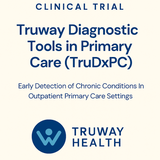3D Printing in Healthcare: Revolutionizing Medical Supply Production
The healthcare industry is constantly evolving, and 3D printing stands at the forefront of this transformation. Also known as additive manufacturing, 3D printing has revolutionized how medical supplies and equipment are designed, produced, and delivered. From prosthetics to surgical tools, this technology is reshaping the landscape of healthcare with unprecedented precision and customization.
1. Customization: Tailored Solutions for Every Patient
One of the greatest advantages of 3D printing is its ability to create customized medical products, perfectly tailored to individual patients.
Applications:
- Prosthetics and Orthotics: Tailor-made prosthetics fit more comfortably and function better, enhancing quality of life.
- Dental Implants: Customized crowns, bridges, and dentures can be printed with extreme precision.
- Hearing Aids: 3D printing has revolutionized the hearing aid industry, reducing production time while improving comfort and fit.
Why It Matters:
Customization ensures that medical devices are more effective, reducing complications and improving patient outcomes.
2. Faster Production Times
Traditional manufacturing methods can take weeks or months to produce medical supplies. With 3D printing, the process is significantly faster.
Examples:
- Surgical Tools: Hospitals can print sterilizable instruments on demand, avoiding delays in critical surgeries.
- Medical Models: Doctors use 3D-printed anatomical models for pre-surgery planning, reducing operating times and improving accuracy.
Impact:
Faster production means quicker responses in emergencies and improved access to medical supplies in underserved regions.
3. Cost Efficiency
3D printing reduces production costs by eliminating the need for molds and minimizing material waste.
Applications:
- Single-Use Medical Equipment: Items like syringes, forceps, and clamps can be printed cheaply and efficiently.
- Reusable Parts: Replacement parts for expensive medical devices can be printed, extending their lifecycle.
Cost Benefits:
This affordability makes high-quality medical supplies accessible to hospitals, clinics, and patients worldwide.
4. Bioprinting: The Future of Organ Transplants
Bioprinting, a specialized branch of 3D printing, uses living cells to create tissues and organs.
Current Advances:
- Skin Grafts: Bioprinted skin is already being used for burn victims.
- Tissue Engineering: Scientists are developing bioprinted tissues for research and drug testing.
- Organs on the Horizon: While still in development, bioprinting has the potential to create transplantable organs, addressing the global organ shortage crisis.
Impact:
Bioprinting could revolutionize regenerative medicine, saving countless lives in the future.
5. Sustainable and Eco-Friendly Solutions
3D printing reduces material waste, making it an environmentally friendly option in healthcare production.
Key Innovations:
- Recyclable Materials: Use of biodegradable and recyclable materials minimizes environmental impact.
- On-Demand Manufacturing: Hospitals can produce supplies locally, reducing transportation emissions.
Why It Matters:
Sustainability is a growing concern in healthcare, and 3D printing offers a practical solution.
6. Decentralized Production: Empowering Remote Healthcare
3D printing enables decentralized production, ensuring medical supplies are available even in remote or disaster-stricken areas.
Applications:
- Emergency Supplies: Disaster relief teams can print medical tools and equipment on-site.
- Rural Clinics: Remote healthcare facilities can print supplies locally, bypassing supply chain delays.
Global Impact:
Decentralized production democratizes access to medical technology, bridging the gap between urban and rural healthcare.
7. Challenges and Future Directions
While the potential of 3D printing in healthcare is vast, challenges remain.
Challenges:
- Regulatory Hurdles: Ensuring the safety and efficacy of 3D-printed medical products.
- Material Limitations: Developing biocompatible materials for complex medical applications.
- Skill Gaps: Training healthcare professionals to use and maintain 3D printing technologies.
Future Directions:
- Continued innovation in bioprinting and sustainable materials.
- Integration with AI and IoT for smarter production processes.
- Expansion into personalized medicine and regenerative healthcare.
Conclusion
3D printing is transforming healthcare by making medical supply production faster, cheaper, and more accessible. From prosthetics to bioprinted organs, this technology is opening new possibilities for personalized and sustainable healthcare solutions. As innovation continues, 3D printing will undoubtedly play a central role in the future of medicine.
Explore Truway Health’s cutting-edge 3D printing solutions for medical supply production and see how we’re shaping the future of healthcare.
Truway Health News & Insights
Breathe, Refuel, Recharge: Finding Your Daily Balance
Written by Perry JohanssenPublished and Edited by Truway Health Life rarely slows down on its own. B...
Truway Health Launches “ImmuneNet”: A New Era in Quantum-Synaptic Immunotherapy
Reimagining How Immunity Can Be Understood and Guided At Truway Health, innovation never sleeps.Toda...
Announcing the HEALTH Trial: Humanoid Evaluation and Learning in Healthcare
Published by Truway Health, Inc.Principal Investigator: Gavin SolomonClinicalTrials.gov Identifier:...
We’re thrilled to launch our first-ever clinical trial of TruDxPc
Study Identification Protocol ID: TRHW-DX-001 Brief Title: Truway Diagnostic Tools in Primary Ca...
What to Know About the Seasonal Flu This Year
As cooler weather sets in, flu season returns. Each year brings new strains, evolving guidance, and...
Gamification and Health: Turning Wellness Into a Daily Game
Introduction For many people, staying healthy feels like a chore: eating clean, exercising regularly...







